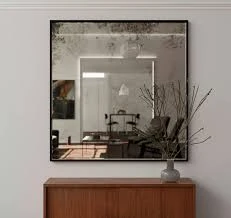

Understanding Frosted Float Glass A Blend of Aesthetics and Functionality
Frosted float glass, a unique and versatile material, has become increasingly popular in architectural and design applications due to its ability to provide both privacy and light diffusion. Its production involves a specialized manufacturing process that results in a distinctive frosted surface that softens the harshness of light while maintaining an airy, open feel within spaces.
The Production Process
Frosted float glass is created through a two-step process. Initially, clear float glass is produced using the float glass method, where molten glass is floated on a bed of molten tin. This results in a smooth, flat surface that is ideal for a variety of applications. The next step involves the texturing of one or both sides of the glass, which can be achieved through several methods, including sandblasting or acid etching. In sandblasting, fine particles are propelled at high speeds to create a matte finish. Acid etching involves applying a chemical solution to the glass surface to achieve a similar frosted effect. Both methods not only alter the appearance of the glass but also its functional properties.
Aesthetic Appeal
One of the foremost advantages of frosted float glass is its aesthetic appeal. The frosted surface provides a beautifully diffused light, reducing glare while still allowing natural light to penetrate a space. This characteristic makes it a favored choice in residential settings, commercial spaces, and public buildings. Designers often use frosted glass in partitions, doors, windows, and shower enclosures to create a sense of openness while also ensuring privacy. The soft, diffused light offered by frosted glass adds warmth and sophistication to interiors, enhancing the overall ambiance of any environment.
Functional Benefits

Beyond its aesthetic qualities, frosted float glass offers significant functional benefits. The opacity created by the frosting process makes it an excellent choice for spaces requiring privacy, such as bathroom windows or office cubicles. Unlike clear glass, which can compromise privacy, frosted glass allows light to filter through while obscuring visibility, making it ideal for a variety of applications.
Additionally, frosted glass is more durable than traditional glass due to its treatment process. The frosted surface is less prone to scratches and smudges, making it easier to maintain its clean and appealing appearance over time. This durability, combined with its beauty, makes frosted float glass a practical choice for high-traffic areas.
Environmental Considerations
Sustainability is increasingly becoming a priority in modern architecture and design. Frosted float glass is manufactured using environmentally friendly processes. The raw materials are abundant, and the production methods have evolved to minimize waste and energy consumption. Moreover, glass is fully recyclable, making it a green building material option for environmentally conscious consumers and designers.
Conclusion
In summary, frosted float glass is an exceptional material that brings together aesthetics, functionality, and sustainability. Its ability to transform spaces by allowing light to flow while ensuring privacy makes it a valuable choice for architects and designers alike. Whether used in residential homes, commercial buildings, or artistic installations, frosted glass contributes to creating inviting and beautiful environments without compromising on quality or style. As trends continue to evolve, the popularity of frosted float glass is likely to grow, reinforcing its status as a must-have in modern design.